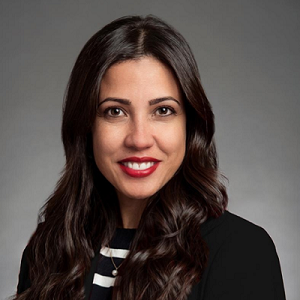Top-Level Takeaways
- Strategic Partnerships: TDECU’s collaboration with the University of Houston enhances financial education for student-athletes, ensuring timely and fee-free payments while leveraging their influence for brand engagement.
- Tailored Financial Education: TDECU provides personalized financial guidance to student-athletes, addressing both basic financial skills and complex issues like tax obligations and wealth management.
- Measured Impact: TDECU tracks engagement metrics and aligns its NIL initiatives with its mission of financial education, using student-athletes to connect authentically with a younger audience.

In just three years, the market for name, image, and likeness (NIL) deals with college athletes has exceeded $1 billion, according to NIL platform Opendorse. As credit unions explore partnerships in this quickly maturing space, finding ways to address financial needs specific to student-athletes could set them apart from other sponsors.
In June 2023, TDECU ($4.7B, Lake Jackson, TX) extended its long-term relationship with the University of Houston for another 10 years. The credit union has naming rights to the school’s football stadium — TDECU Stadium — and now aims to serve the financial needs of college athletes and the broader student population. In March 2024, it announced a new partnership with LinkingCoogs, an NIL collective established in 2022 that seeks to benefit all 600 athletes across 17 sports teams at the University of Houston.
Prior to the LinkingCoogs partnership, the credit union worked with the collective on March Madness and Final 4 projects in 2023. That experience led to broader conversations regarding how TDECU could enable a better experience for student-athletes.
Cooperative Power
In the past, LinkingCoogs’ payment mechanism had delayed and reduced compensation for the student-athletes, says Sheiludis Moyett, chief marketing officer for TDECU. Through the three-year partnership between TDECU and LinkingCoogs, athletes can now opt-into TDECU’s fee-free payment infrastructure — meaning they get paid faster and without fees to eat into their earnings. Athletes may also benefit from the affordable banking solutions and one-on-one financial counseling available to all of the credit union’s members.
“What we offer the student-athletes isn’t that different from what we offer all our members,” Moyett says. “They need to understand how to establish credit, budget effectively, and manage money just like everyone else. However, they also have some unique needs when it comes to financial guidance.”
To that end, TDECU tailors its approach to reach student-athletes where they are today as well as where they might be tomorrow.
“It’s important we help them understand more complex issues, like tax obligations and wealth management, so they are prepared for the financial responsibilities that come with NIL income opportunities and other potential professional sponsorships down the road,” Moyett says.
Collective Power
CU QUICK FACTS
TDECU
DATA AS OF 03.31.24
HQ: Lake Jackson, TX
ASSETS: $4.7B
MEMBERS: 385,822
BRANCHES: 34
EMPLOYEES: 868
NET WORTH: 10.1%
ROA: 0.70%
LinkingCoogs’ focus on preparing student-athletes for the future through financial education and guidance aligns directly with TDECU’s mission. Founded by former UofH Cougars and current business leaders, the collective connects athletes with potential sponsors and handles all transactions — from scouting sponsors to introducing players, inking the deal to making payment — to protect athletes, schools, and sponsors.
For its NIL sponsorship money, TDECU plans to use athletes across the spectrum of UofH sports teams to reach students through campaigns and events. For now, however, it will start small to learn what resonates best with its new audience while relying on the athletes — who Moyett says many students look up to and closely follow — to connect with the younger audience in a way other TDECU efforts might not.
“We could end up tapping all 600 athletes, but that won’t happen right away,” Moyett says. “The first wave might be 20 and the next wave might be another 20. We’ll start small with bite-sized financial education content delivered by someone students can connect with and want to hear from. Our goal is to create meaningful and relevant content for the start of the next academic year.”
Goals, Risk Management, And Advice
TDECU intends to measure the success of its NIL dollars and collective partnership in several ways. The credit union will track the number of individuals it reaches, how well people relate to the brand and understand its dedication to financial education, and how athletes and students engage with TDECU.
“It’s about our brand and reputation, but it’s also about doing what’s right in terms of financial education,” Moyett says.
Importantly, Moyett and her team vet all potential spokespeople to determine how they might represent the TDECU brand; that’s not any different for individual student-athletes.
“We look at how they behave and how they embody the values we care about,” the CMO says. “Working with the collective versus making long-term deals with specific athletes also helps us reduce the risk a bit compared to a typical endorsement.”
In addition to determining specific metrics and being mindful of risk, Moyett also advises credit unions to approach NIL deals with a members-first mentality and develop a clear strategy with individuals who authentically align with the credit union’s values. For TDECU, incorporating financial education was another key element to consider.
“Credit unions can do a lot to help young athletes get a strong financial start, especially if they focus on building relationships,” Moyett says. “At TDECU, our purpose is to help people navigate their financial future. That motivated us to pursue this next phase of our relationship with UofH. We enjoy the visibility of stadium naming rights, but driving value for these student-athletes allows us to demonstrate what we’re about.”